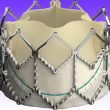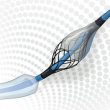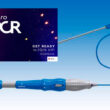Bicuspid aortic valve malformation is the most frequent cardiac malformation (about 1%), and a significant percentage of these cases generate severe aortic stenosis. As we know, transcatheter aortic valve replacement (TAVR) has been developed for tricuspid valves, which are studied in the most important randomized trials for high-, medium-, and low-risk patients. While current information<a href="https://solaci.org/en/2022/03/16/are-expandable-balloon-valves-an-option-for-the-bicuspid-valve-in-low-risk-patients/" title="Read more" >...</a>
AHA 2021 | AVATAR: Early Intervention in Asymptomatic Aortic Stenosis
Early surgical aortic valve replacement (SAVR) in patients with severe asymptomatic aortic stenosis can be beneficial in selected patients vs. waiting for symptoms. Severe AS in patients with no symptoms and conserved ventricular function raises few questions, clinically speaking. However, there is little evidence in favor of early intervention vs. close observation. The best data<a href="https://solaci.org/en/2021/11/23/aha-2021-avatar-early-intervention-in-asymptomatic-aortic-stenosis/" title="Read more" >...</a>
TCT 2021 | SURTAVI: Good News for the Self-Expandable Valve at 5 Years
After a 5-year followup, the transcatheter aortic replacement (TAVR) with the self-expandable valve has offered clinical outcomes similar to surgical aortic valve replacement (SAVR) outcomes for intermediate risk patients. As we already knew form the 2-year followup, the all-cause or disabling stroke rate at 5 years between TAVR and SAVR continued to be similar (31.3%<a href="https://solaci.org/en/2021/11/09/tct-2021-surtavi-good-news-for-the-self-expandable-valve-at-5-years/" title="Read more" >...</a>
Device Evolution Also Impacts on Valve in Valve
TAVR to treat dysfunctional biological prosthetics (ViV) with the last generation self-expandable supra-annular prosthetic offers excellent results both clinical and hemodynamic. In addition, there were additional reductions of paravalvular regurgitation compared against the original models. The present registry published in JAHA is the most extensive to treat this issue and replicate outcomes from the clinical<a href="https://solaci.org/en/2021/10/21/device-evolution-also-impacts-on-valve-in-valve/" title="Read more" >...</a>
Failed Aortic Bioprosthesis: Valve in Vale or Repeat Surgery?
The Valve in Valve (ViV) technique seems to be a better option than repeat surgery for failed aortic bioprosthesis. While this strategy lacks long-term evidence to address issues such as durability, it is considered as an option especially for young patients. ViV to treat failed surgical bioprosthesis has shown lower in-hospital mortality compared with repeat<a href="https://solaci.org/en/2021/10/20/failed-aortic-bioprosthesis-valve-in-vale-or-repeat-surgery/" title="Read more" >...</a>
New Markers of Aortic Stenosis Define Asymptomatic Patients
Asymptomatic aortic stenosis has been keeping us in tense stillness. However, there are new markers capable of identifying patients that might benefit from earlier intervention. In this regard, cardiovascular magnetic resonance (CMR) has been gaining its well-deserved place in cardiology and now more specifically in aortic stenosis. This study sought to validate CMR markers of<a href="https://solaci.org/en/2021/08/19/new-markers-of-aortic-stenosis-define-asymptomatic-patients/" title="Read more" >...</a>
Self-Expanding Valve in Extreme Surgical Risk After 5 Years
Patients with aortic stenosis and extreme surgical risk have extremely high mortality due to known comorbidities. The short-term benefit of transcatheter aortic valve replacement (TAVR) with self-expanding valve is clear, and it warrants the procedure in this challenging population. While elderly patients with comorbidities who are at extreme surgical risk might be eligible for TAVR,<a href="https://solaci.org/en/2021/06/24/self-expanding-valve-in-extreme-surgical-risk-after-5-years/" title="Read more" >...</a>
EuroPCR 2021 | Evolut Low Risk: Two-Year Results of The Self-Expanding Valve in Low-Risk Patients
Transcatheter aortic valve replacement (TAVR) with the Evolut self-expanding valve was non-inferior to surgery in patients with low surgical risk. After two years, the primary endpoint of death or disabling stroke was similar between both strategies. This presentation at EuroPCR 2021 reinforces the results presented during the American College of Cardiology (ACC) 2019 Congress and<a href="https://solaci.org/en/2021/05/27/europcr-2021-evolut-low-risk-two-year-results-of-the-self-expanding-valve-in-low-risk-patients/" title="Read more" >...</a>
TAVR vs. the Least Invasive Surgically Implanted Valve
Rapid-deployment surgically implanted valves are designed to make a surgeons’ job faster and easier, compared with conventional bioprostheses, which require several stitches. These valves, which shorten surgical times, could compete with transcatheter-implanted valves (transcatheter aortic valve replacement, TAVR). The German Aortic Valve Registry analyzed 16,473 patients who underwent surgical aortic valve replacement with either a current-generation<a href="https://solaci.org/en/2021/04/19/tavr-vs-the-least-invasive-surgically-implanted-valve/" title="Read more" >...</a>
Surgeons’ Claim on Low-Risk Patients with Aortic Stenosis
Recent randomized trials including low-risk patients showed positive results for transcatheter aortic valve replacement (TAVR) compared with surgical aortic valve replacement. However, surgeons argue that these cases fail to consider patients from daily clinical practice, but rather include a population that has been carefully selected for randomized trials. Patients with non-tricuspid aortic stenosis, with severe<a href="https://solaci.org/en/2021/03/25/surgeons-claim-on-low-risk-patients-with-aortic-stenosis/" title="Read more" >...</a>








